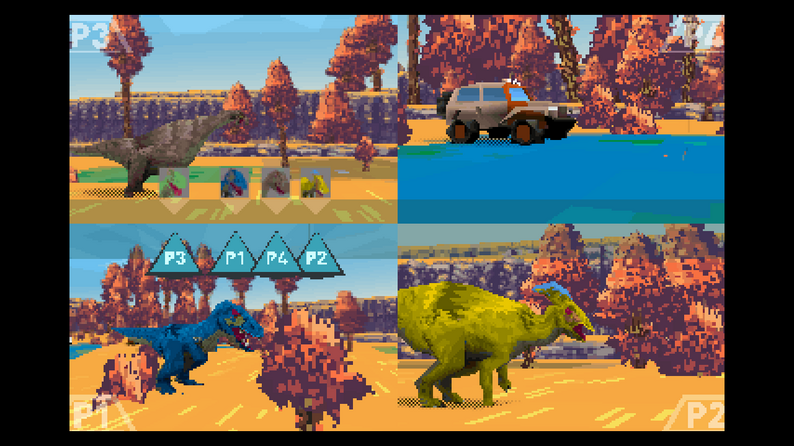

Luigi Musso managed to score third place at the time of its debut at the Naples GP and Maurice Trintignant won the Coupe de Vitesse.
Dino walk simulator car drivers#
Its drivers included Luigi Musso, Maurice Trintignant and Peter Collins. The chassis was made of steel tubes with independent front suspension, a de Dion rear axle along with Houdaille shock absorbers. Īs per the naming convention, the 1.5-litre, 6-cylinder car was named 156 and made its debut at the Naples Grand Prix in 1957. The valvetrain was of a twin overhead camshafts per bank type with two valves per cylinder and single spark plugs.

The fuel system consisted of three Weber 38DCN carburettors and used regular fuel. Total capacity was 1,489.35 cc (90.9 cu in 1.5 L) (bore of 70 mm and stroke pf 64.5 mm) and power output was 180 PS (132 kW 178 hp) at 9000 rpm with a 10:1 compression ratio.

The new V6 engine, first built and tested in 1956, had to adhere to 1.5 litre, Formula 2 regulations. Powered by an all-new, front-mounted, 65° Dino V6 co-designed by Vittorio Jano and named in memory of Enzo Ferrari's late son, Alfredo "Dino" Ferrari. The first race car to ever bear the Dino marque badge was the 1957 Dino 156 F2 single seater intended for the Formula 2 series. 246 being a 2.4-litre, 6-cylinder and 308 being a 3.0-litre, 8-cylinder. The Dino models used Ferrari naming convention of displacement and cylinder count with two digits for the size of the engine in decilitres and the third digit to represent the number of cylinders, i.e. The Dino script that adorns the badge and cylinder head covers was based on Alfredo's own signature. Along with engineer Vittorio Jano, Alfredo persuaded his father to produce a line of racing cars in the 1950s with V6 and V8 engines. rex, you would have no problem walking it-in terms of speed, at least.The name Dino honors Ferrari founder Enzo Ferrari's late son, Alfredo "Dino" Ferrari, credited with designing the V6 engine used in the car. So, when Trix was out on a stroll, she walked at roughly the same speed as you do. From these, they derived the natural frequency and a prefered walking speed: 4.6 km/h (2.9 mph). They added digital muscles to the famous skeleton, and on this muscular model they could perform biomechanical analyses. To find out what that frequency is, Van Bijlert and his professors Anne Schulp (Naturalis/Utrecht University) and Knoek van Soest (VU) built a 3D model of Trix, the Tyrannosaurus rex on display at the Dutch National Museum of Natural History, Naturalis. Credit: Rick Stikkelorum, Arthur Ulmann and Pasha van Bijlert The tail is resonating, allowing for a more realistic, slightly slower gait. An animation of T.rex Trix walking according to the simulations in Van Bijlert et al 2021. That means that like the swing, it has a natural frequency at which it resonates. "A suspension bridge with a ton of muscle in it." Every step the tail swings up and down. "You could compare it with a suspension bridge," Van Bijlert explains. Like the bones in our necks, the bones in tails are held together by ligaments. These carnivorous dinosaurs didn't just have two legs, they also had an enormous tail that helped them move around. Pasha van Bijlert, student Human Movement Sciences at the Vrije Universiteit in Amsterdam (VU), applied the idea to an animal that walked differently from anything walking the earth right now: Tyrannosaurus rex. This works for animals that walk on four feet, and for two-legged animals like humans and ostriches.

Walking slightly slower doesn't require less energy: you notice that it's actually harder. And when you're on a nice relaxing walk, the parts of your body resonate, too. In other words: you have to resonate with it. If you want to do it properly, you have to get the timing right, and swing in the rhythm of the swing. You already know how it works: when you are on a swing, you can't just swing at any speed. One of the ways to achieve this is using something called resonance. This is, in part, influenced by the amount of energy required: they prefer to walk at the speed at which they use the lowest possible amount of energy. Humans and animals have a preferred walking speed.


 0 kommentar(er)
0 kommentar(er)
